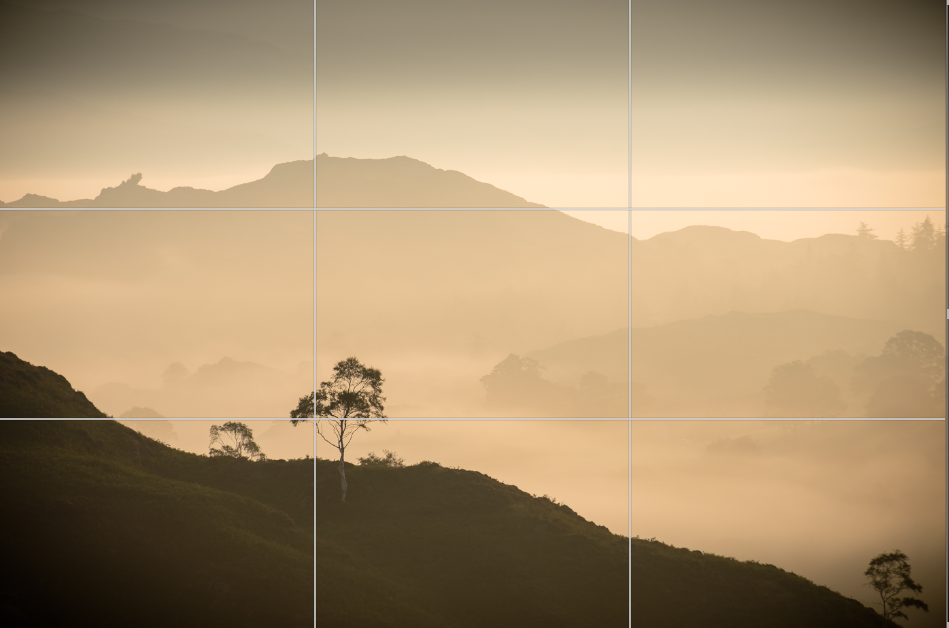Composition tips: The Rule of Thirds explained
by Alex W.
If you’re a beginner photographer that has spent any time searching for tips on how to improve your photography, it’s almost a guarantee that you’ve seen the Rule of Thirds touted about.
But what actually is the Rule of Thirds?
We’ll answer that below, as well as giving you tips on how to use the Rule of Thirds and, almost as importantly, when you shouldn’t use this tool.
Why? Because using the Rule of Thirds in every image quickly results in your images becoming stale and predictable, and we don’t want that, do we?
What is the Rule of Thirds?
While we are specifically talking about photography here, the Rule of Thirds actually predates photography by some distance and is a guideline used across a variety of visual media, from graphic design to paintings.
It was first put in writing back in the 1790s by John Thomas Smith as he wrote about balancing lightness and darkness in paintings, but it’s long been a staple in the photography world.
The theory of the Rule of Thirds is to dissect the image into nine equal frames by overlaying a 3×3 grid onto the image, either imaginatively or using post-processing software.
This results in two horizontal lines and two vertical lines running through the image, each about a third of the way in from the edge. It also creates four points at which these lines intersect, as you can see below.

The principle of the Rule of Thirds is that the focal points and points of interest in your image should fall on these intersections or lines.
In the example above, the tree is carefully placed on the lower-left third intersection while the horizon runs roughly along the upper third line. This tends to produce a more balanced and aesthetically pleasing image than if the tree was placed dead-centre of the frame.
How to use the Rule of Thirds
The easiest way to apply the Rule of Thirds in the field is to image that 3×3 grid being overlaid on your viewfinder and work with that. In fact, many camera models now have the option to have an actual Rule of Thirds overlay on your frame, but if yours doesn’t it just takes a little practise.
It doesn’t have to be perfect. The Rule of Thirds is a guideline, so don’t worry about getting your focal points perfectly positioned on the intersections. In fact, the Rule of Thirds isn’t even correct, so to speak. It’s actually a dumbed down version of the Golden Ratio, which we’ll cover in a separate article.

Of course, we never advocate following these so-called rules to the letter, but the Rule of Thirds is such an effective tool that it should always be considered at the very least. With that in mind, here are some questions you can ask yourself before pressing the shutter:
- What are the main points of interest in this scene?
- Could I balance this shot using the Rule of Thirds?
- Is the foreground or the sky more interesting?
- Would my image look more striking if the main subject were centered?
If you do decide this is the best technique to use, here are some tips for using the Rule of Thirds:
- Position your main focal points at the intersections of the lines
- Achieve balance by positioning focal points at opposite intersections (eg a tree in the lower left third and the sun in the upper right third)
- In landscape photography try to position the horizon along the one of the horizontal lines.
- In portrait photography align the body along a vertical line and the eyes along a horizontal one.
- In cityscape photography position the most prominent and interesting buildings along a vertical line.
- When photographing moving subjects position them in a third with the majority of the frame in front of them, giving them ‘space to move in to’.
- Combine the Rule of Thirds with other compositional tools such as leading lines and the rule of odds.
When not to use the Rule of Thirds
No rule should be adhered to 100% of the time in photography, or indeed art in general, and the Rule of Thirds is no different.
It is undoubtedly an incredibly useful compositional tool to have at your disposal, but using it with wild abandon will inevitably lead to boring and predictable images.
Always considering whether using the Rule of Thirds is the right approach or whether composing the scene differently would yield better results, rather than automatically falling back on something that becomes a crutch for many photographers.
Here are some things to think about when considering breaking the Rule of Thirds:
- Reflections – Rather than placing the horizon along one of the horizontal lines, try composing so the reflection is symmetrical.
- Minimalism – When shooting a minimalist scene with a single focal point, try positioning the focal point perfectly central.
- Tension – Evoke feelings of tension by placing subjects near to the edge of the frame. This is a tough one to get right!
- Scale – Enhance the grandeur and drama of a stormy sky by placing the horizon at the bottom, filling the frame with a dramatic sky and creating a sense of huge scale.
- Panoramas – Panoramic images are one of the few areas of photography where the Rule of Thirds is actually harder to use than not.
- Mystery – Placing subjects dead-center while leaving a lot of negative space around them can enhance the sense of mystery and intrigue.
Finally, here’s an example of when the Rule of Thirds should be broken. This LEGO scene was all about drama, scale and mystery, so I placed both of the main subjects dead center of the frame and used darkness and shadow to create a lot of negative space. This image simply wouldn’t work using the Rule of Thirds.

More from Click and Learn
Getting it right: the best settings for night photography
12 best cameras for under $500
Ultimate Guide to Beach Photography
The best vlogging cameras right now
 |
 |
 |
 |

About Alex W.
Alex is the owner and lead writer for Click and Learn Photography. An avid landscape, equine, and pet photographer living and working in the beautiful Lake District, UK, Alex has had his work featured in a number of high profile publications, including the Take a View Landscape Photographer of the Year, Outdoor Photographer of the Year, and Amateur Photographer Magazine.
Thoughts on "Composition tips: The Rule of Thirds explained"
 |
 |
 |
 |
You can Get FREE Gifts. Furthermore, Free Items here. Disable Ad Blocker to receive them all.
Once done, hit anything below
 |
 |
 |
 |